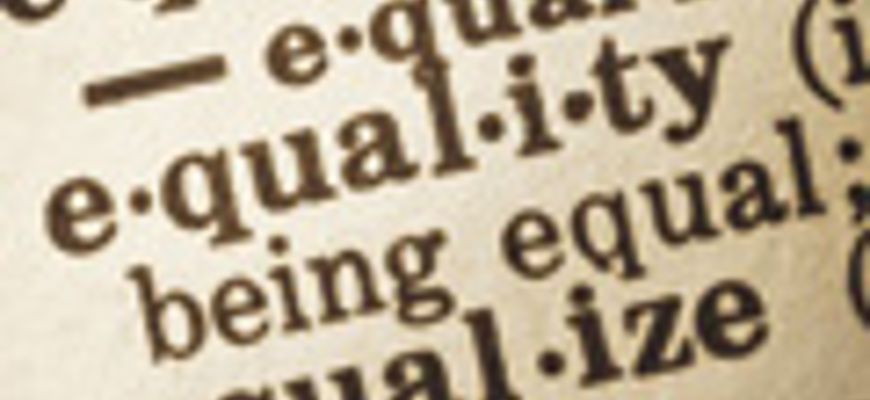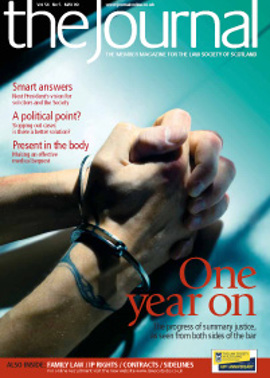Equality redefined

Press focus on the Equality Bill announcement centred firmly on plans to “force” firms to reveal the gender pay gap. However, amongst the 252 pages, 205 clauses and 28 schedules, there is a great deal more for employment lawyers to digest.
There is new language. The bill talks of “protected characteristics”, of which there are nine: age; disability; gender reassignment; marriage and civil partnership; pregnancy and maternity; race; religion or belief; sex; and sexual orientation.
The definition of “direct discrimination” is amended to bring age, disability, gender reassignment and sex into line with race, religion or belief and sexual orientation. A person (A) discriminates against another (B) “if, because of a protected characteristic, A treats B less favourably than A treats or would treat others” (emphasis added). So, gone is “on the grounds of B’s age”, “on the grounds of the disabled person’s disability” etc. The new definition is intended to cover less favourable treatment because of the victim’s association with someone who has a protected characteristic, or because the victim is wrongly perceived to have it.
There are no great surprises regarding indirect discrimination. The new definition is simply a streamlined version of the current definitions.
However, the concept of disability-related discrimination is recast in an effort to re-establish the protection lost following the House of Lords judgment in London Borough of Lewisham v Malcolm [2008] UKHL 43. Clause 14 provides: “A person (A) discriminates against a disabled person (B) if: (a) A treats B in a particular way, (b) because of B’s disability, the treatment amounts to a detriment, and (c) A cannot show that the treatment is a proportionate means of achieving a legitimate aim.” This aims to strike a balance between enabling a disabled person to make out a case of experiencing a detriment which arises because of his or her disability, and providing an opportunity for an employer to defend the treatment.
Three types of harassment are enshrined in the bill, retaining the current distinction in the Sex Discrimination Act 1975, s 4A. The first applies to all the protected characteristics, apart from pregnancy and maternity, and marriage and civil partnership. It is the familiar definition involving unwanted conduct that has the purpose or effect of creating an intimidating, hostile, degrading, humiliating or offensive environment for the complainant, or which violates the complainant’s dignity. The second type is sexual harassment in the form of unwanted conduct of a sexual nature, where this has the same purpose or effect as above. The third is treating someone less favourably than another because they have either submitted, or failed to submit, to sexual harassment, or harassment related to sex or gender reassignment. The use of “related to”, however, widens the ability to bring harassment claims to acts founded on association or perception.
At present, liability for third party harassment (i.e. by someone who is not the employer or another employee) is restricted to the grounds of sex (1975 Act, s 6(2B)). This is broadened in the bill to all protected characteristics (clause 37). However, the “three strikes” rule which caused controversy when it was introduced is retained.
Multiple discrimination is a concept being considered for introduction into the bill. A short consultation has been launched on the implications of such a move, which would strike at cases where a unique combination of protected characteristics results in discrimination, in such a way that they are completely inseparable. The explanatory notes to the bill describe this as “intersectional multiple discrimination”, noting that the current discrimination law framework does not always provide a remedy for it. The consultation – which closes on 5 June – aims to ascertain how this could work in practice.
What of equal pay? Contrary to many of the media reports, private sector employers are not to be forced to reveal the gender pay gap imminently. The bill does contain a power to require employers with 250-plus employees to report on the gender pay gap, but the Government has committed not to exercise this power until 2013, and then only if insufficient progress has been made on voluntary reporting. The Equality and Human Rights Commission will consult over the summer on a set of metrics for gender pay reports.
There is not enough space to go into the changes being made to positive action provisions, the provision of a single public sector equality duty, the implementation of a socio-economic public sector duty, the banning of pay secrecy clauses, tweaks to other definitions, or the extension of a tribunal’s ability to make recommendations benefiting the workforce as a whole. The target date for key provisions to come into force appears to be late 2010 or early 2011, so there is plenty of time to begin absorbing the bill’s contents. However, my advice – do it in bite-sized chunks.
In this issue
- Obama's first 100 days
- Playing politics with the Scottish constitution
- Beneficiaries are suffering from the high cost of advice
- Ever forwards
- Shared principles
- A year of debate
- Ask the audience
- Property sales continue to fall
- Where fact makes law
- Giving up the body
- Playing politics with the constitution
- Matrix evolutions
- Make it happen
- View from the top
- Retiring thoughts
- Law reform update
- Phone a friend
- Lighting the way
- Is Big Brother watching too closely?
- Ask Ash
- Selection, the professional way
- A claims pandemic?
- Bumper crop
- A place in the sun?
- Equality redefined
- Taking diligence forward
- Scottish Solicitors' Discipline Tribunal
- Book reviews
- Website review






